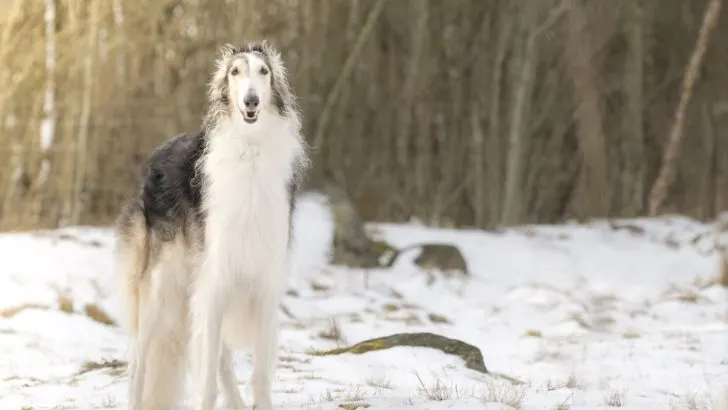You must have had two questions if you ever saw this unique dog. The first question is whether this is a dog or an alien pretending to be one, and the other one must be what coat colors this special breed comes in.
Today, we won’t touch upon the whole alien thing because, to be honest, we aren’t sure either! But we will give you an overview of all Borzoi Colors that exist.
This elegant-looking sighthound has a calm and agreeable temperament. This breed is packed with grace, glamour, and strength. These fast dogs can run up to 40 miles per hour.
A mature male of this breed should be at least 28 inches at the shoulder and weigh anywhere from 75 to 105 pounds. Females will be smaller, as is the rule with all breeds of dogs.
Underneath their silky and luxurious coat, the construction of the Borzoi follows the ancient Greyhound template.
This breed was once known as the Russian Wolfhound, bred as hunting dogs for wolf and fox hunting. (1)
These dogs have an added bonus – their big personality! But the Borzoi are a pretty stubborn dog breed, so during training, you need to equip yourself with a lot of patience and high-value food.
However, they are affectionate family pets who are a bit too dignified to enjoy too much roughhousing.
Yet, their prey drive is through the roof. The simple sight of a squirrel or a cat will ignite their pursuit instinct, so a fenced-in yard is necessary.
The Standard Colors Of The Borzoi Breed
This article mainly focuses on the naming of colors in the Borzoi breed, as well as describing them while adhering to the very limited system that is permitted by the “AKC coat color names.”
You may notice the term heritage (or genotype) of a color mentioned during the article. You can’t constantly determine the heritage of color from the physical look of an individual adult Borzoi.
In addition, here you can find more complete color names (for example, Maltese blue in connection to the blue dilute dogs), rather than the American Kennel Club (AKC) Borzoi color list blue.
These terms can be used in conversations about dogs with other breed enthusiasts and Borzoi folks or even in writing about dogs, and they should reduce misunderstanding and confusion.
You can always check the AKC web page for any cross-referencing you might want to do.
Each of the standard colors and alternate colors might be combined with the markings if a dog retains them.
Now, let’s get into the more extensive descriptions of all these gorgeous variations for educational purposes about this rare breed.
1. Black
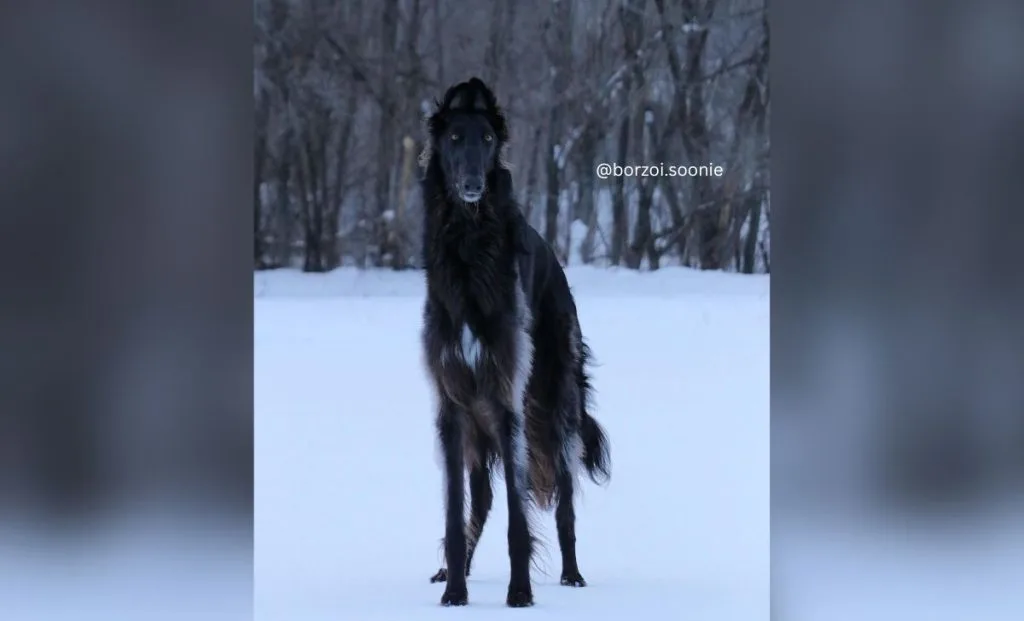
The dominant black color got its name thanks to the fact it’s a dominant allele. That means the pup only requires one allele copy to express that color.
A pup carrying one copy of the dominant black allele will often appear black (aside from possible white patterns, depending on the genetics).
The exceptions to this rule would be liver, blue, sometimes grizzle, recessive red, and ghost tan. All these alleles modify, dilute, or hide the eumelanin responsible for coloring in various ways.
Black without lightening of the extremities in a Borzoi is a genetically different color than black escorted by lighter shades on the dog’s limbs; the latter is named black and tan or cream in this article.
In some cases, in this breed, it can be hard to distinguish black and brindle Borzoi from entirely black dogs.
2. White
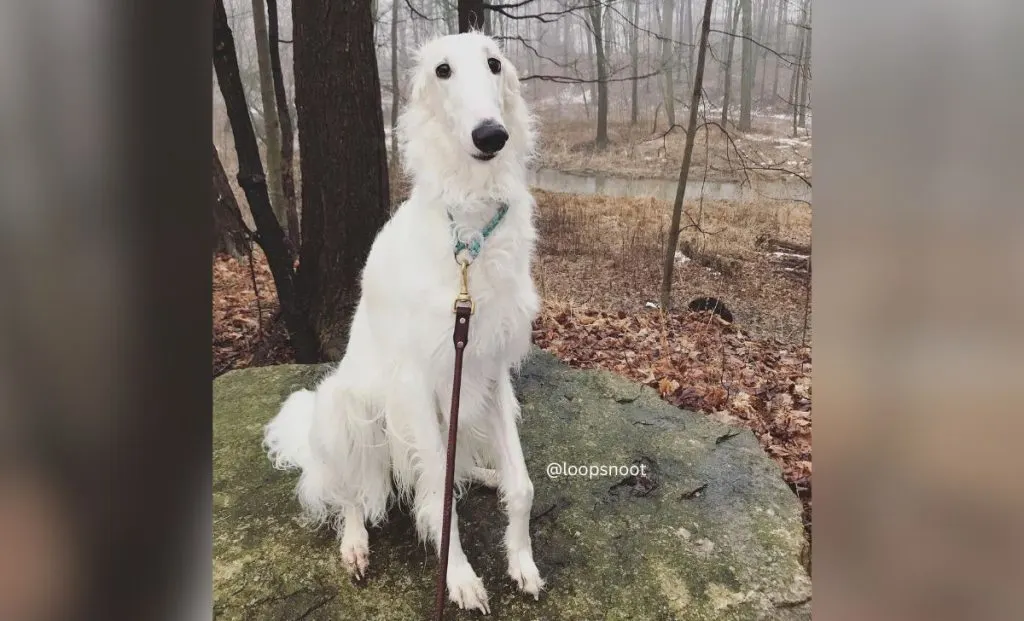
Whiter than the beautiful winter snow, this Borzoi is without a speckle of other colors on the body. They are the pinnacle of gorgeousness.
But you should know that pure white as a particular shade does not exist in canines.
White dogs might be exceptionally paled-out cream or paled-out gold selves (depending on the breed), or they might be spotted canines with tremendous color restriction.
3. Cream
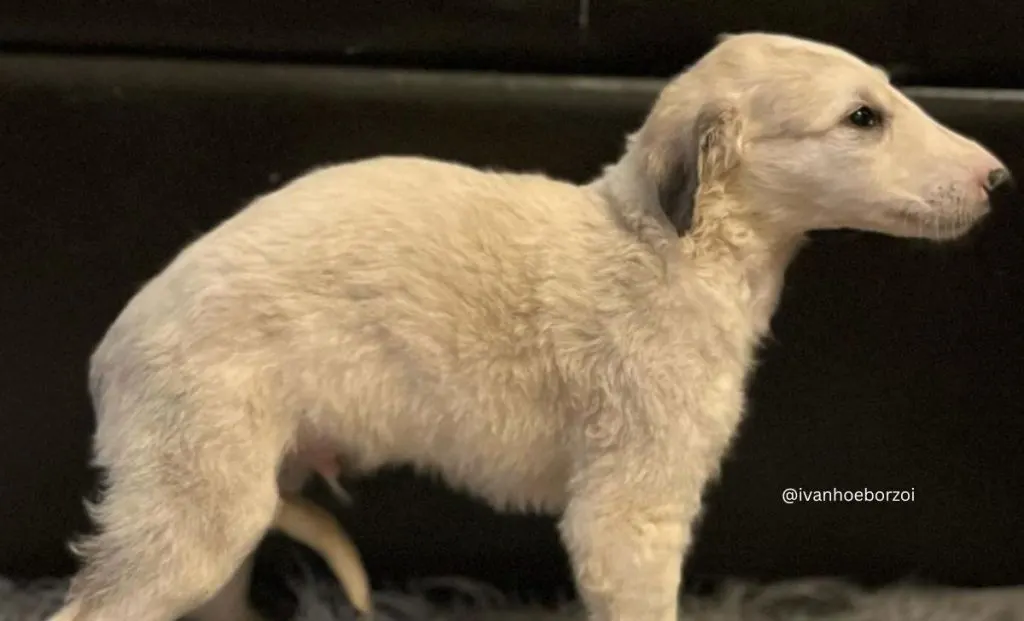
You will love this next type if the white Borzoi is too clean for you. The smooth, lengthy fur of the cream-coated Russian sighthound has an extraordinary glow under the light.
Cream Borzoi are born silver-grey but lose the grey color as they age. It is usually gone from the pup’s fur by 12 weeks of age.
4. Gold
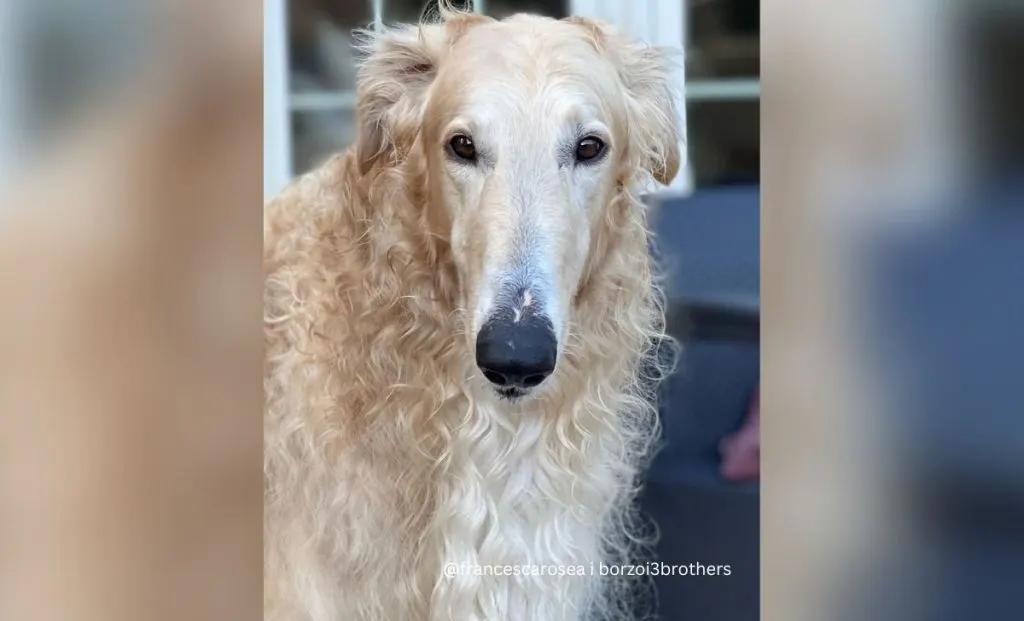
Meet the Borzoi type that closely resembles the famous Domhall Gleeson. It is indeed the goldest of ginger pups out there.
Gold pups are born gold and do not considerably darken with age.
Because gold color is due to a gene that prevents black hairs from occurring in the fur, gold canines can be genetically black, black and tan, or even black and brindle.
5. Red
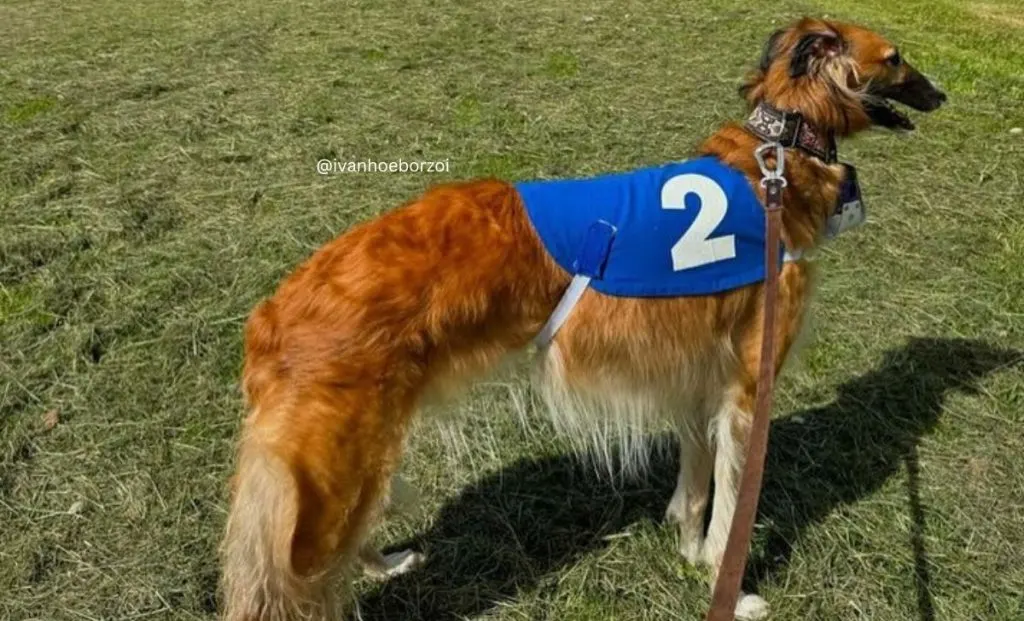
Remember that we just mentioned Domhal Gleeson? Well, the color red is simply the Ronald Weasley of Borzoi colors. The deer-in-headlights look and clumsiness gives Harry’s best friend.
In Borzoi, the term red will be used for canines with intense pheomelanin, the red pigment. If dark hairs are present in the fur, they must be black, not liver-colored.
Just like the eye rim and nos pigment, if it is present, it must be black, not liver.
Red as a term can not be used to describe dogs that have brown dilution recessive alleles. Those Borzoi have liver-colored nose leather and eye rims.
Red-colored dogs can come in a variety of patterns as well, like sable, black mask, or even brindle.
6. Black And Tan
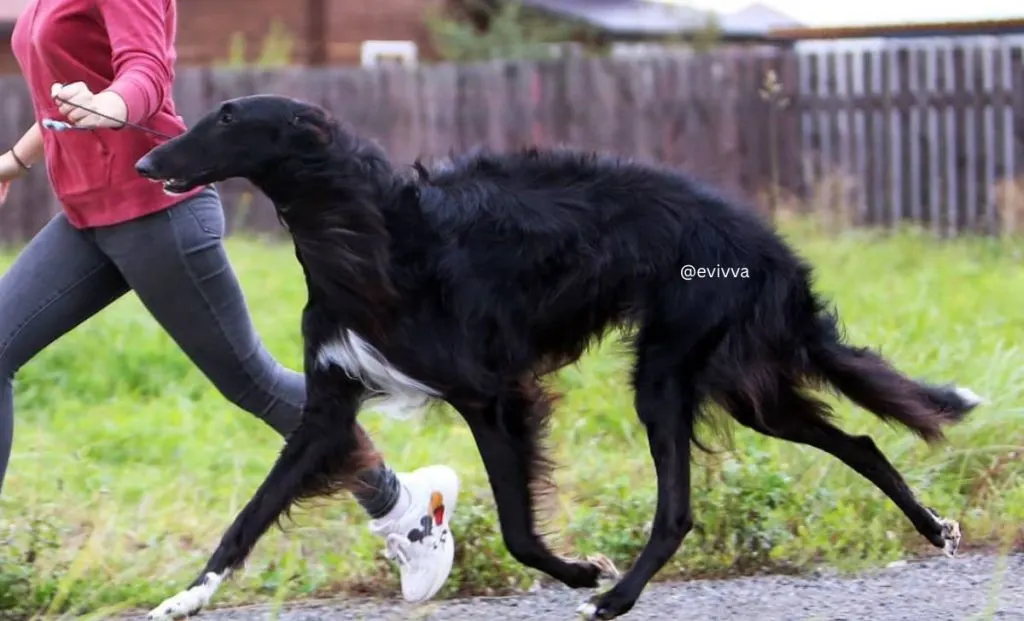
We can say that this color is almost a tasteful spin on the traditional Lassie look with more pronounced white feet, belly, chest, neck, and muzzle as well.
The term black and tan is used to refer to black dogs with a distinct pattern of light points.
Black and tan pups that do not possess black masks will also have specific tan spots above the eyes.
Black and tan dogs seem almost solid black at birth, but the tan points come up within a few days to a few weeks.
7. Black And Cream
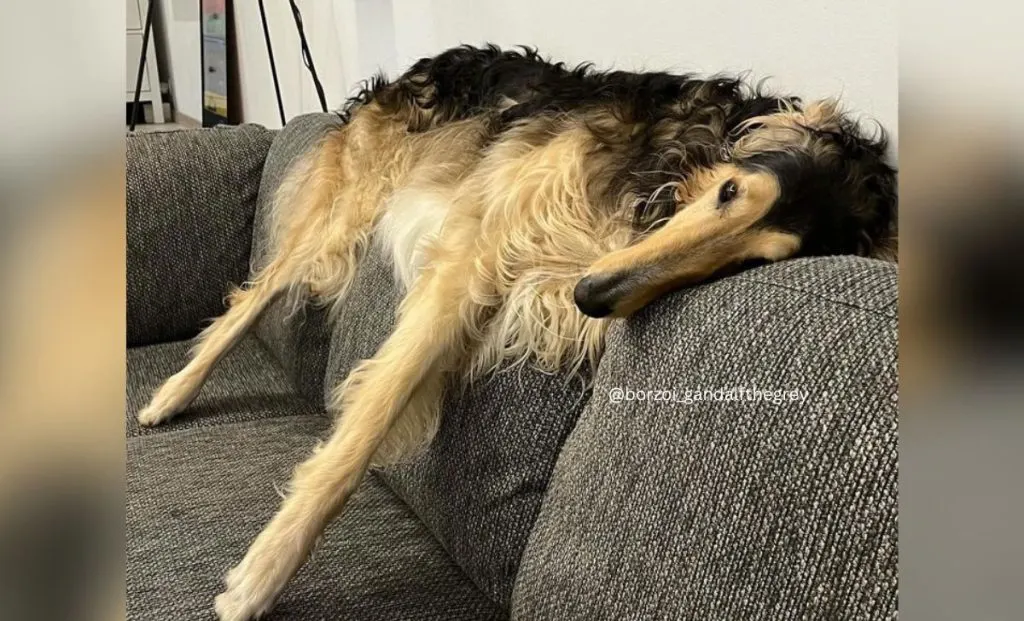
The black and cream combination happens when the black and tan pattern is present in a pup in which the red pigment is paled to the cream shade.
8. Black And Brindle
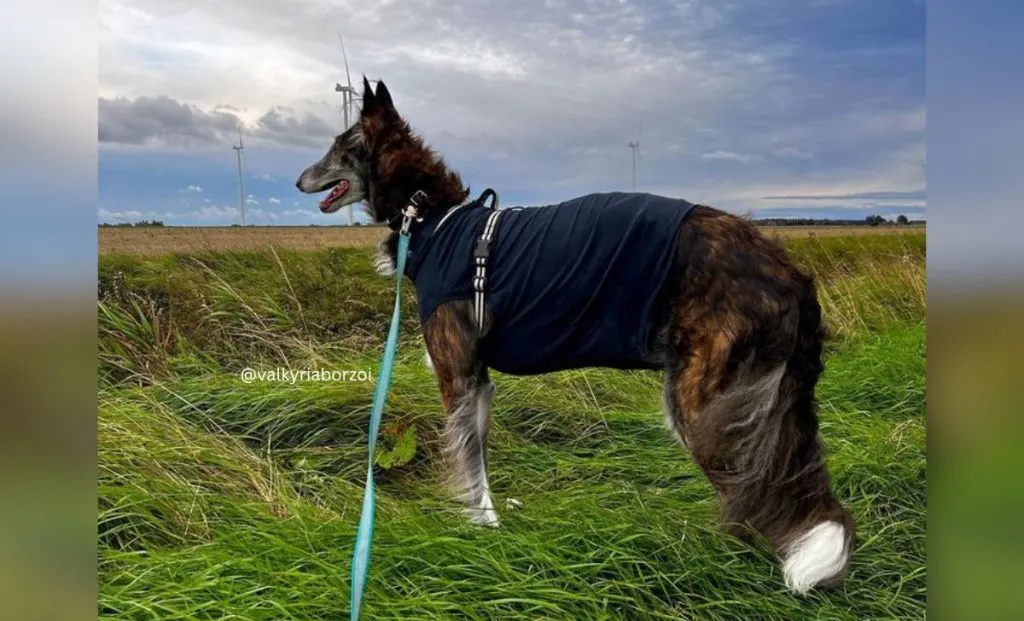
The black and brindle is the color term used to describe a black and tan patterned pup in which the brindle pattern gene is also present, making the tan portions of the pup brindled.
Sometimes, the brindle is so fierce that it is tricky to identify whether the dog is a brindle rather than a self-black.
9. Brindle
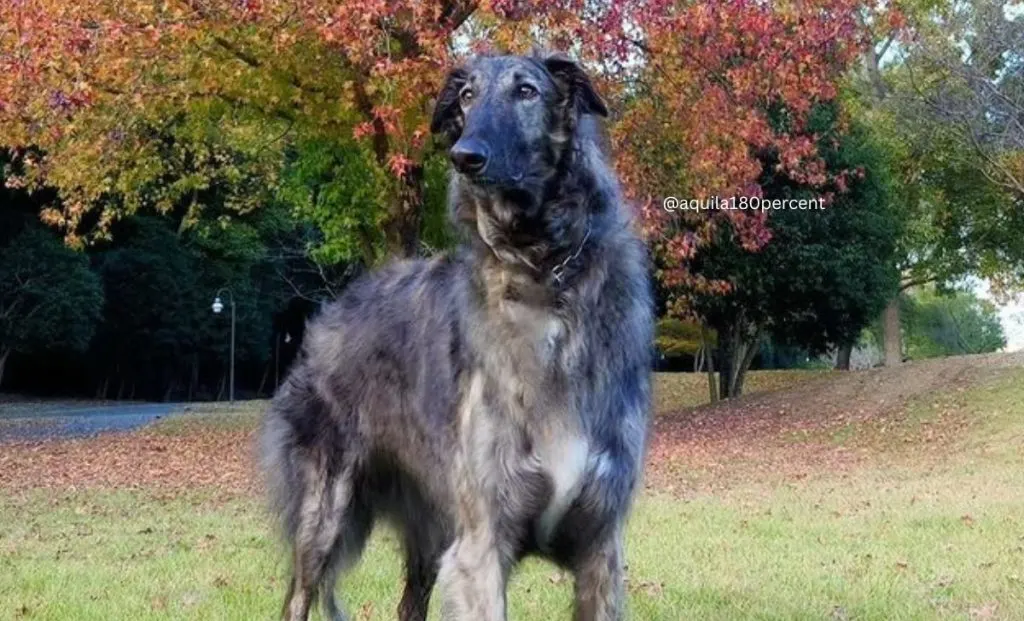
Brindle is a word used to describe a pattern of black lines and stripes wherever red is present in the fur.
Brindle dogs are brindled from birth, even though they might look a bit darker than they will as adults.
In the Borzoi dog breed, the term classically brindle is used to characterize the color, which might be named grey brindle or cream brindle. That is a brindle pattern with an undercoat in a cream color.
If the stripes are broad, the pup seems to be a grey brindle, while if they are spare, it has a cream base color.
10. Silver Brindle
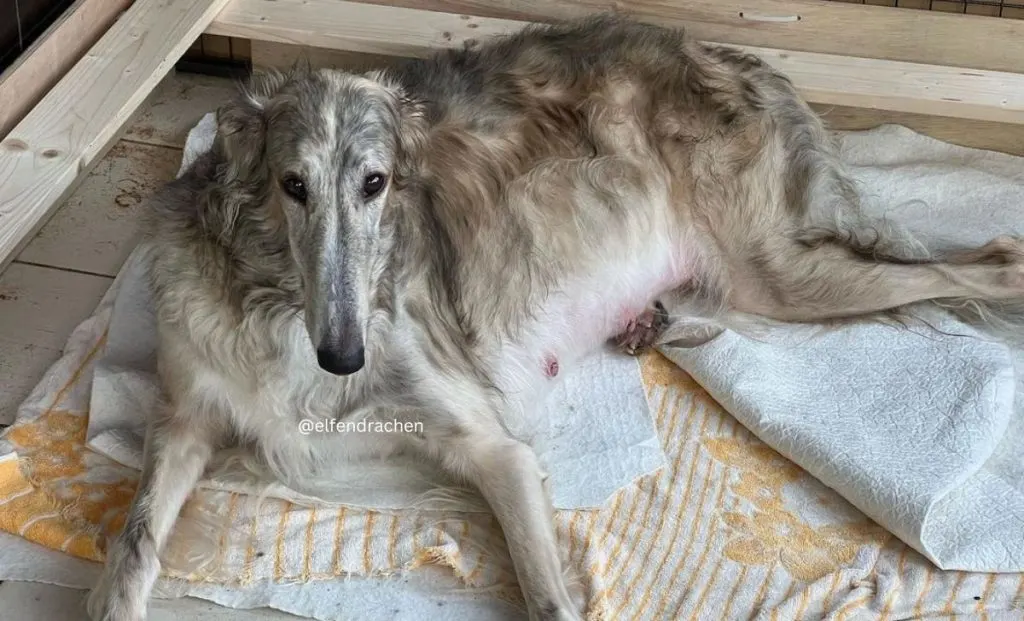
The silver brindle is the pattern plus color combination that happens when a cream Borzoi has brindle markings.
11. Gold Brindle
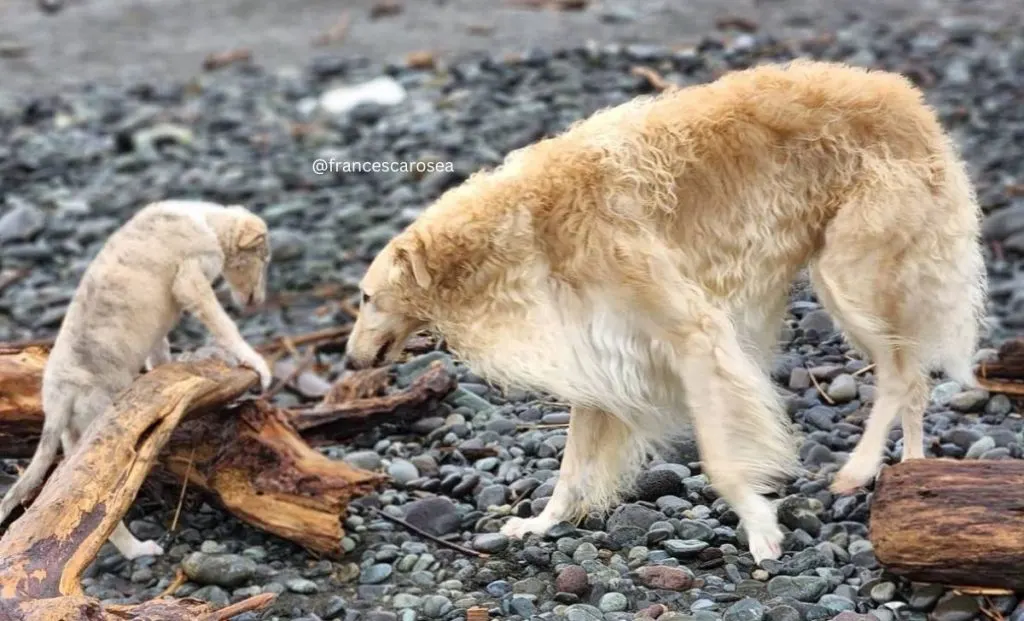
This should not be a likely color if we prohibit using gold to extend locus yellow pups, which can’t have black color in their fur.
12. Red Brindle
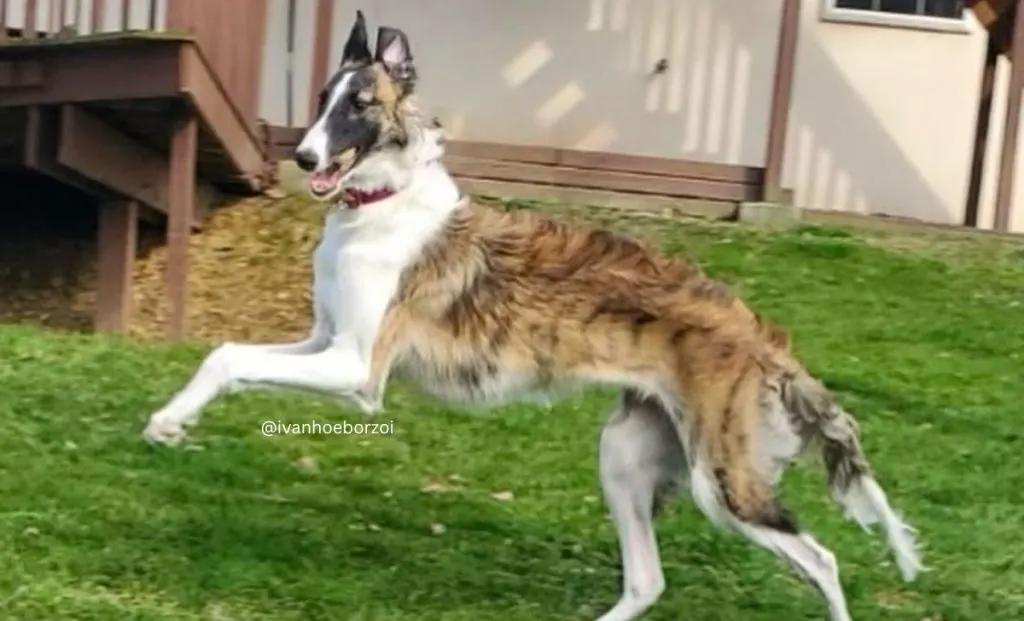
This combo is a red-colored Borzoi that has a brindle pattern.
13. Sable
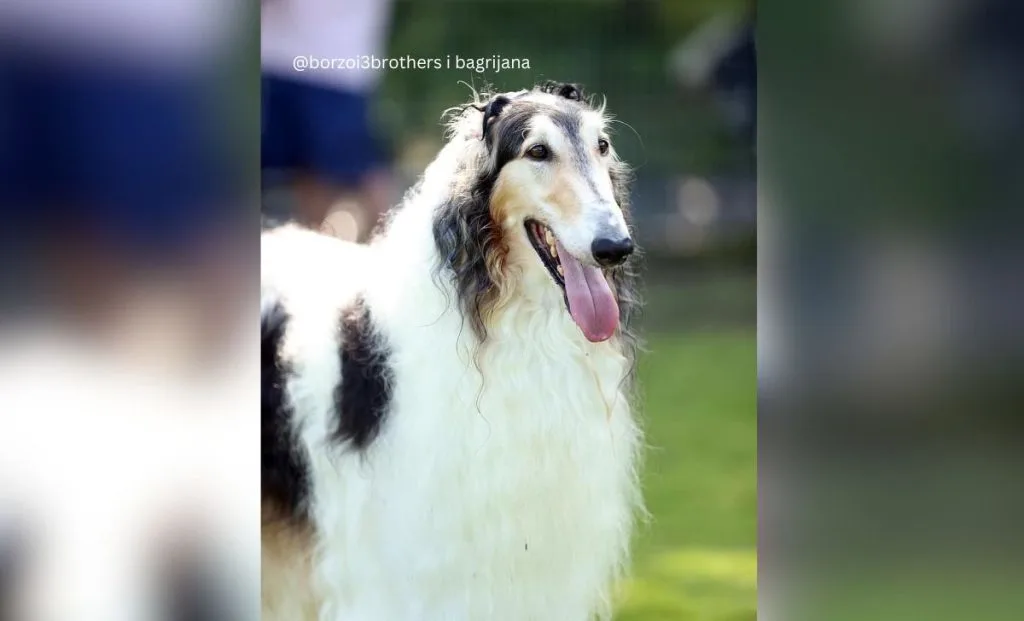
It is a pattern with light points that are more extended than in the black and tan (of which it may be a particular case) where the points are pretty pale, and the upper body of the dog is dark because the fur is tipped with dark pigment but remains pale at the base.
Sables Borzoi has never been seen with a black mask. Sable Borzoi are very dark at birth but have distinctive markings at four weeks of age.
This canine has a minor white marking in the middle of his forehead. In some circumstances, adult sable Borzoi and adult sabled red Borzoi can be complex and challenging to differentiate from each other. Still, the pattern of expansion of the colors from birth is specific.
It is not nearly as tricky to differentiate sable puppies from sabled red puppies.
Silver sable Borzoi are sables in which all red is faded to a pale cream shade.
14. Gold Sable
The term gold sable within the Borzoi breed describes sable pups in which the under color is in the middle between the cream color and red.
It is not a connection to the extension yellow golds.
15. Brindled Sable
The brindle sable patterned Borzoi have brindle where the fur is not heavily marked with black.
If a Brindle sable pup is cut to the skin, brindle stripes can also be seen on the back and neck of the dog.
The presence of the sabled hair tips in the dark areas hides the brindled pattern, but where brindle lines are present on the back of the dog and the upper neck, the hairs are dark even close to the skin rather than just being tipped with black.
16. Sabled Gold
This would not be a probable hue if we prohibited the usage of gold to extend locus yellow pups, which can’t have black color in their coat.
17. Sabled Red
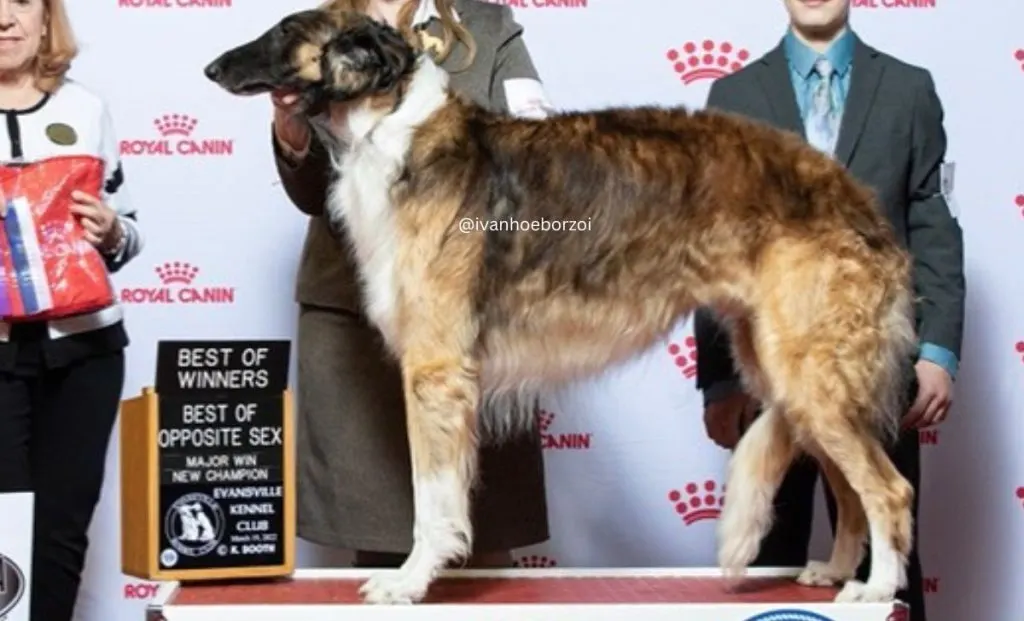
The words sabled red are used to describe red Borzoi, in which the fur has an overlay of black strands.
These pups are relatively brown at birth and lighten as they close on puberty.
The black-colored overlay evolves at or shortly after puberty and becomes additionally intense with each subsequent shed and regrowth process.
Individuals holding the tan point gene can show striking contrasts between the light face and the dark forehead.
While adult sables and sabled reds can be hard to distinguish, what is problematic in red puppies is identifying the sabled reds as dogs; they may show small indications of the dark colors they will display when fully mature.
18. Spotted On White
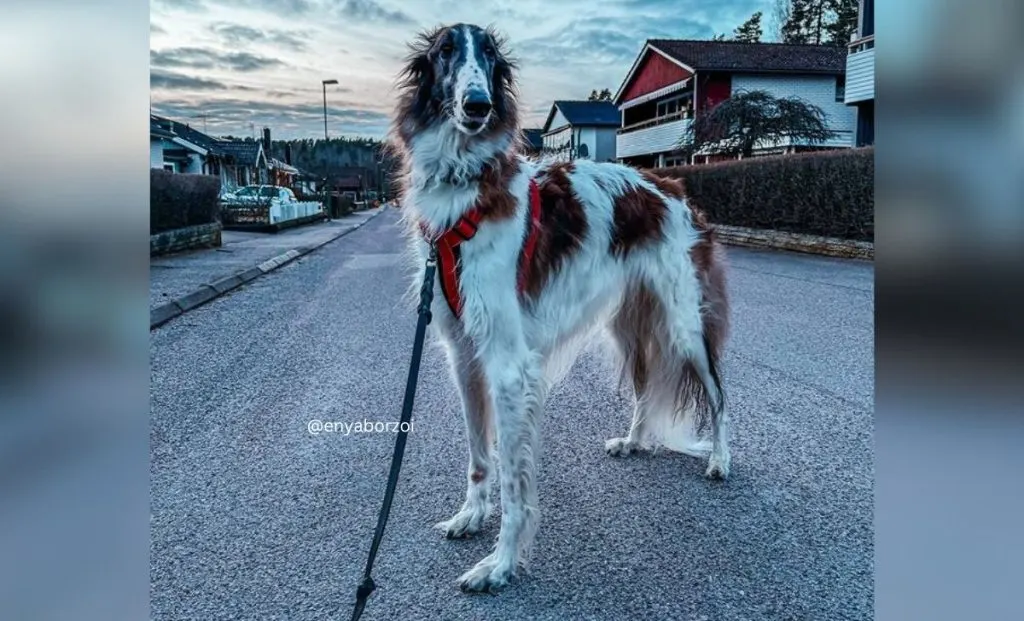
White markings from severe white spotting make the dog over 50 percent white.
19. Spotted On White With The Ticked Pattern
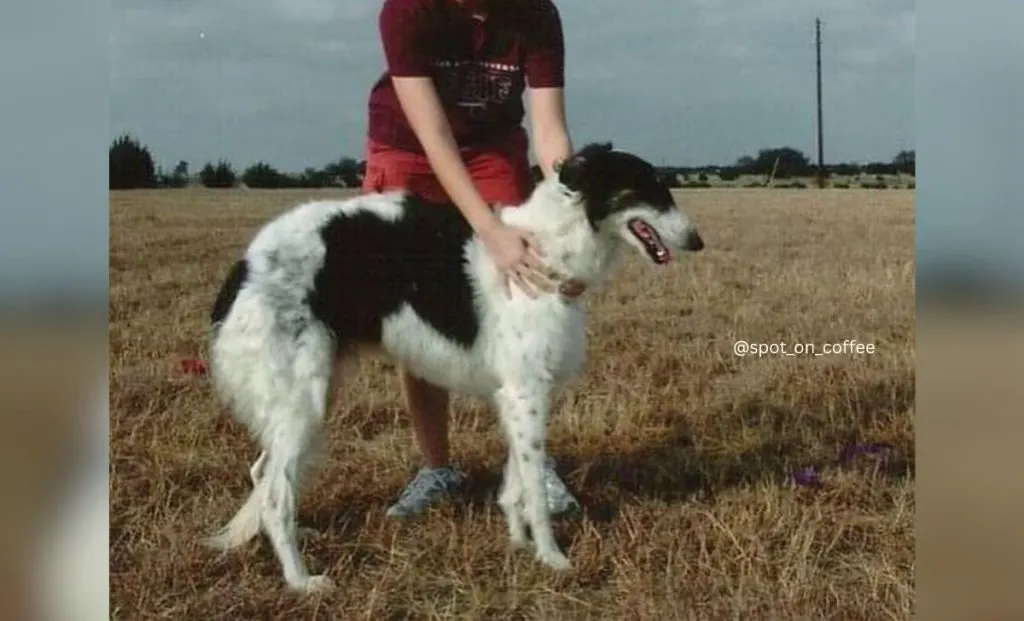
Ticking is the presence of tiny, frequently oval, color spots of the base fur color in the regions where a white marked dog is white.
Ticking is infrequently present at birth and may not come to be evident until the puppy is past puberty. It becomes more intense as the dog ages.
20. Black Mask
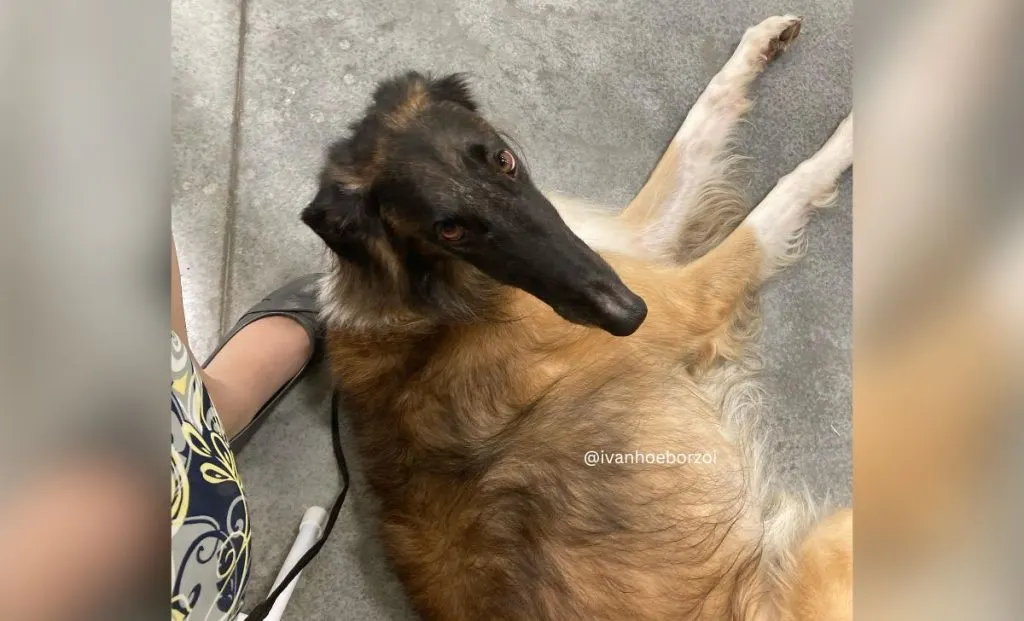
Genetically, the black mask is called hyperextension; this is a dark marking that may be restricted to the muzzle of the dog or may even extend to the back of the head.
There are different degrees of this pattern,
The ears are black-rimmed, and black may occur on the chest and on the front of the feet.
21. White Trim
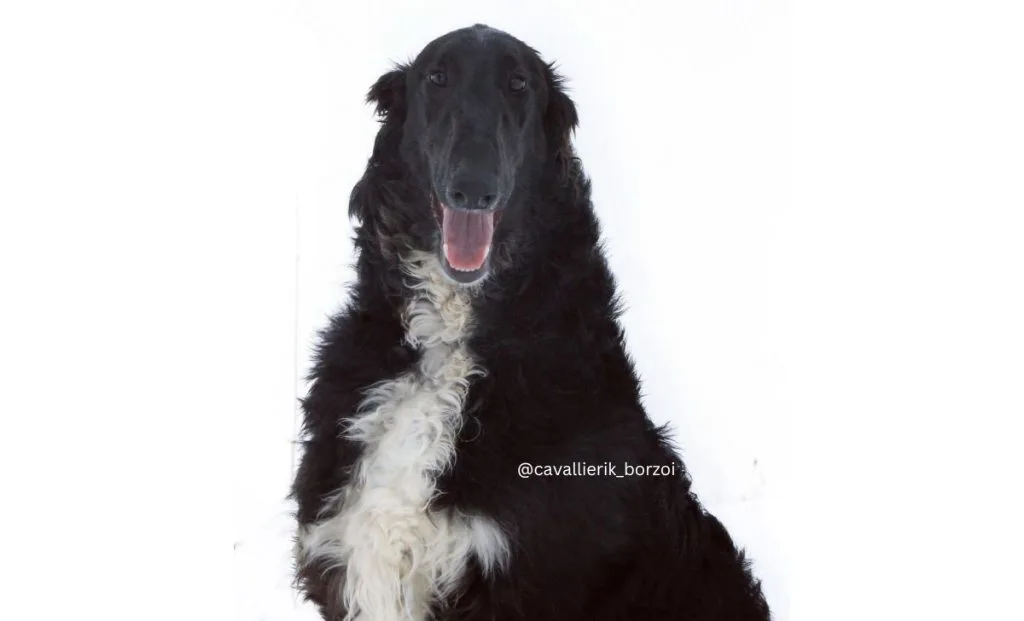
The white trim pattern is white color on the legs of the dog, his chest, the belly, the tail tip, and a blaze white marking on the toes and chest only.
The Nonstandard Or Alternate Colors
Colors classified as “alternate colors” deviate from both breed standards, which are predetermined lists of acceptable colors established in collaboration with breed clubs.
When registering a dog with American Kennel Club (AKC) or The Kennel Club (KC), owners must specify their dog’s color.
If the color falls outside the recognized breed standard or non-breed-standard colors, owners can request registration under the “other” category.
However, this process is uncommon and requires endorsement from a breed club or council.
22. Fawn
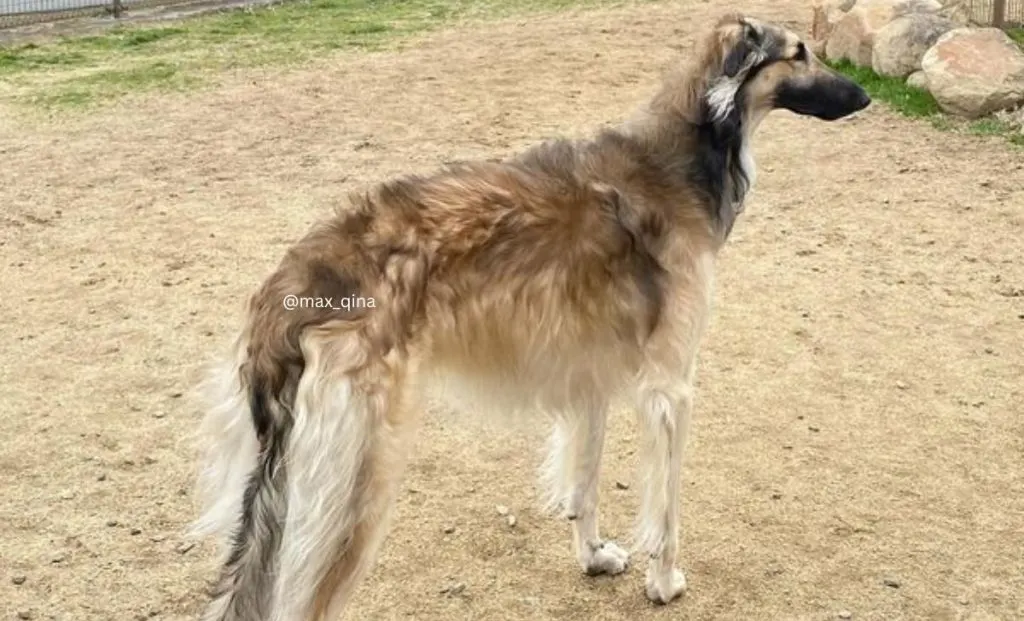
Borzoi has more intense red in the coat than creams; black-tipped hairs are interspersed but do not produce a heavy sable overlay.
This dog is a black-masked fawn.
23. Apricot
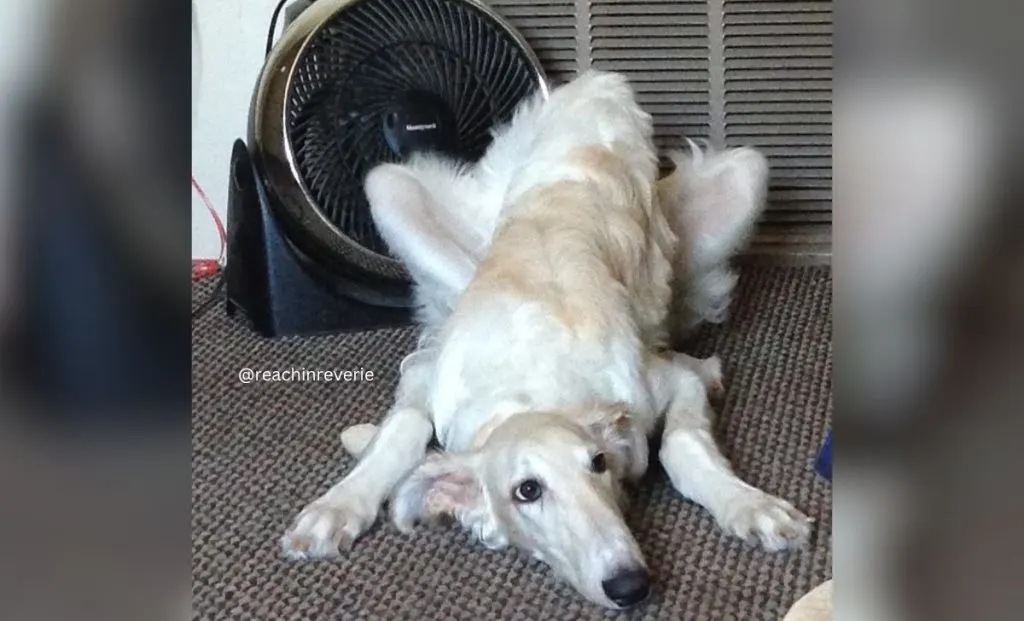
Apricot Borzoi have a more intense red than gold; they lack black hairs in the coat.
They have gold genes with red intensifiers.
24. Blue
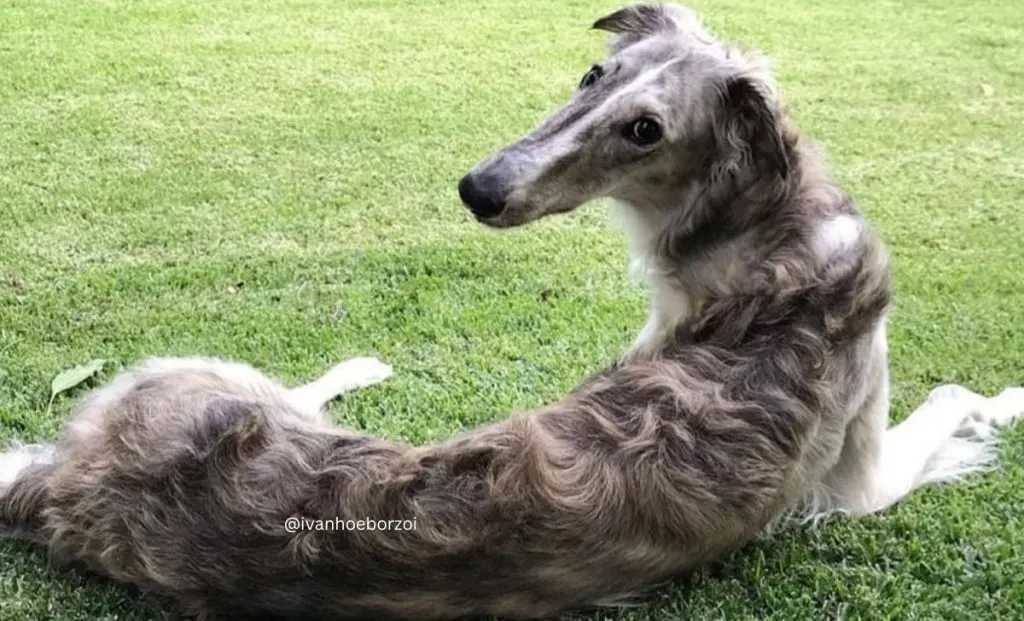
The recessive blue dilution gene changes all black pigment in the coat to Maltese blue.
25. Blue And Cream
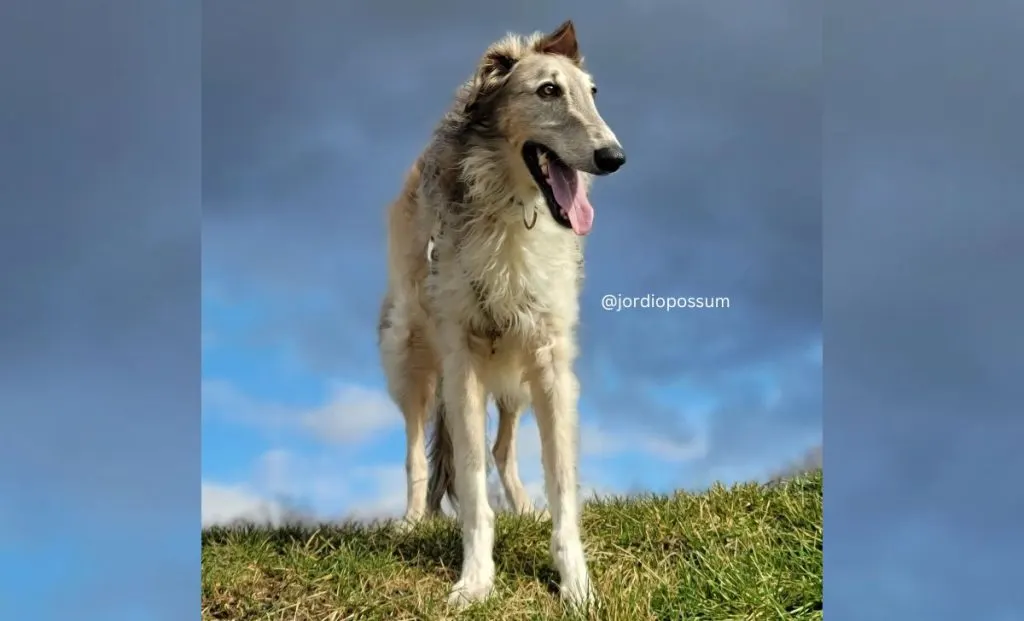
Blue and cream coloring occurs when a black and tan or black and cream pup has two copies of the blue dilute gene.
26. Silver
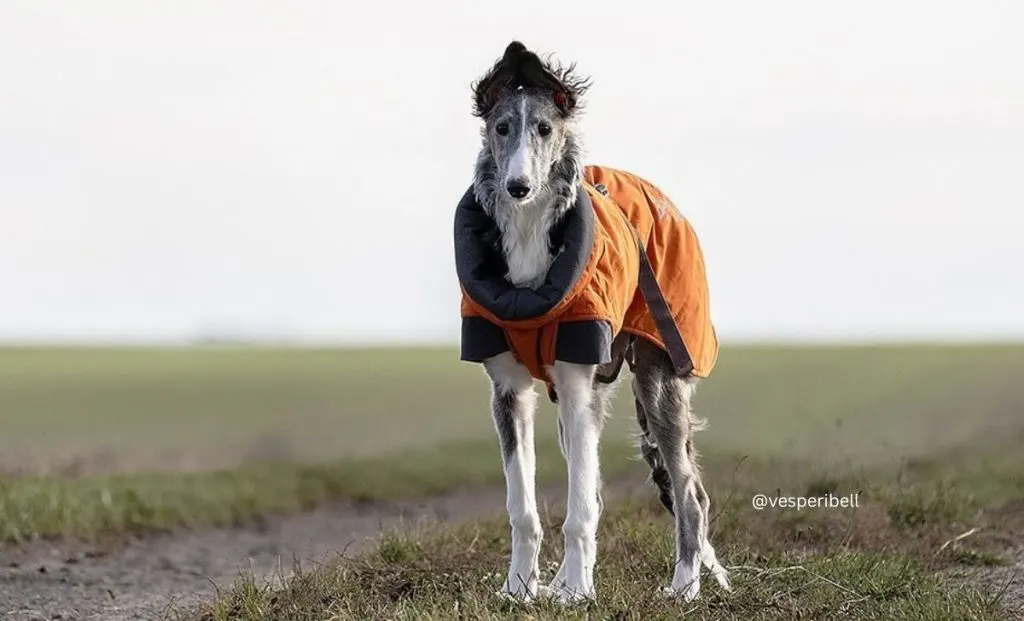
Silver is the color name used to refer to Borzoi, which has a mix of gray and black fur on his face and legs.
The body will have long dark fur that might be tipped with light coloring.
The face of the dog is not paled out as seen in a sable Borzoi, and the fronts of the lower forelegs are darker than the feathering along the back of the dog’s legs.
27. Mahogany Brindle
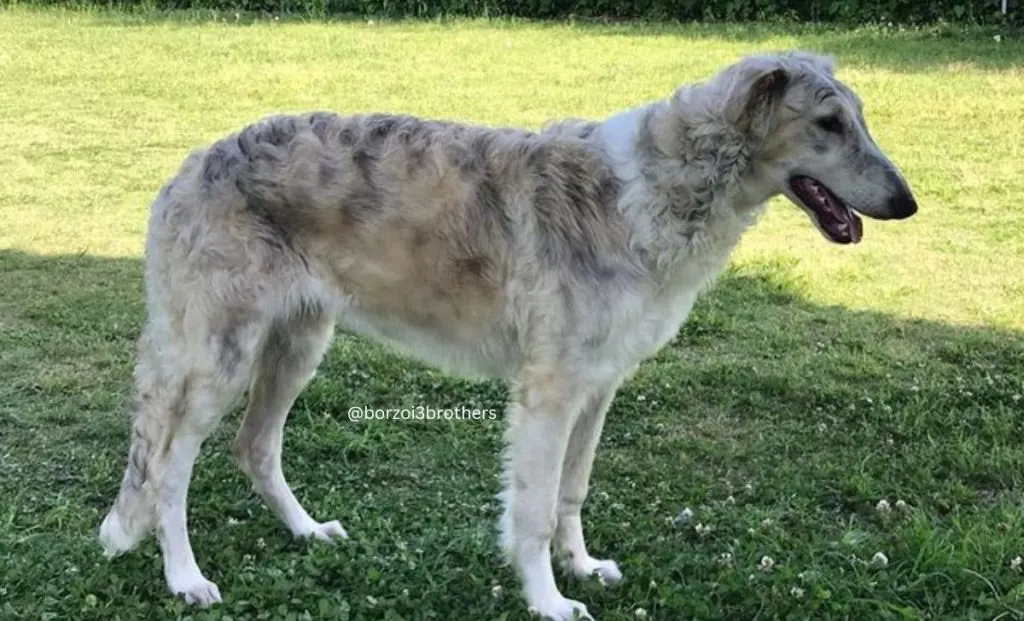
This is another excellent example of the striped look in the Borzoi dog.
Mahogany brindle is used when a brindle puppy is so heavily striped that the specific striping is challenging to see.
28. Blue Brindle
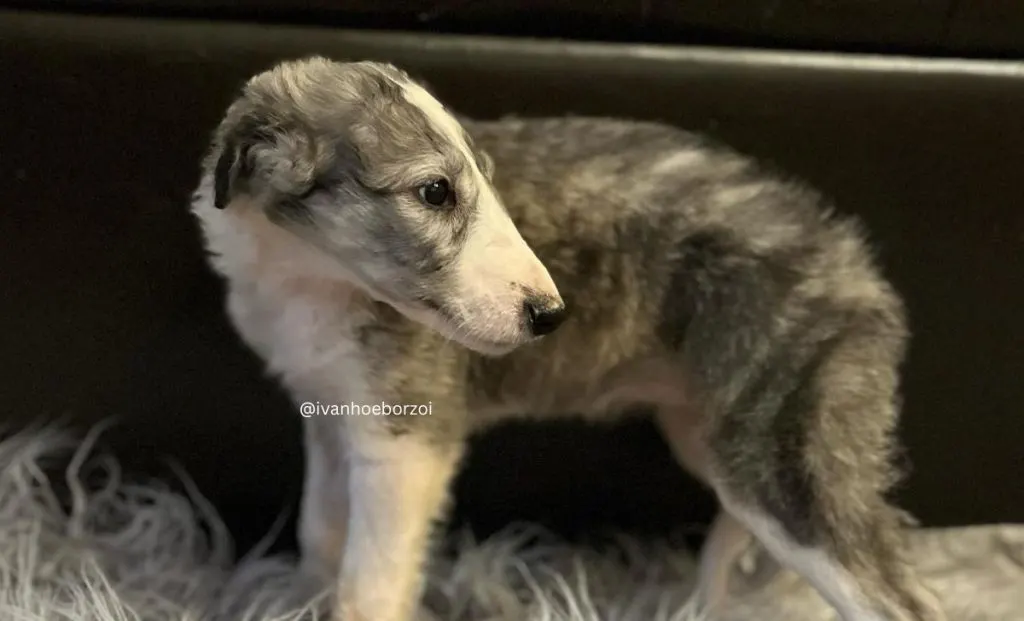
A brindle hound with two doses of the dilution gene.
29. Cream Sable Or Clear Sable
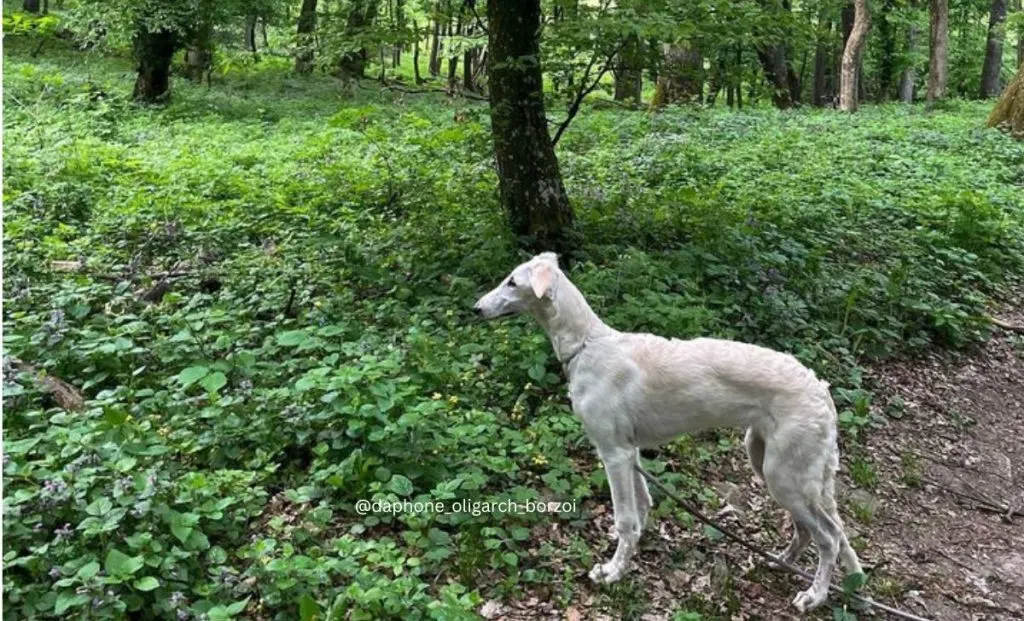
If, in parallel to brindle, we contemplate the standard and default sable as a cream sable, then we don’t need this category.
30. Red Sable
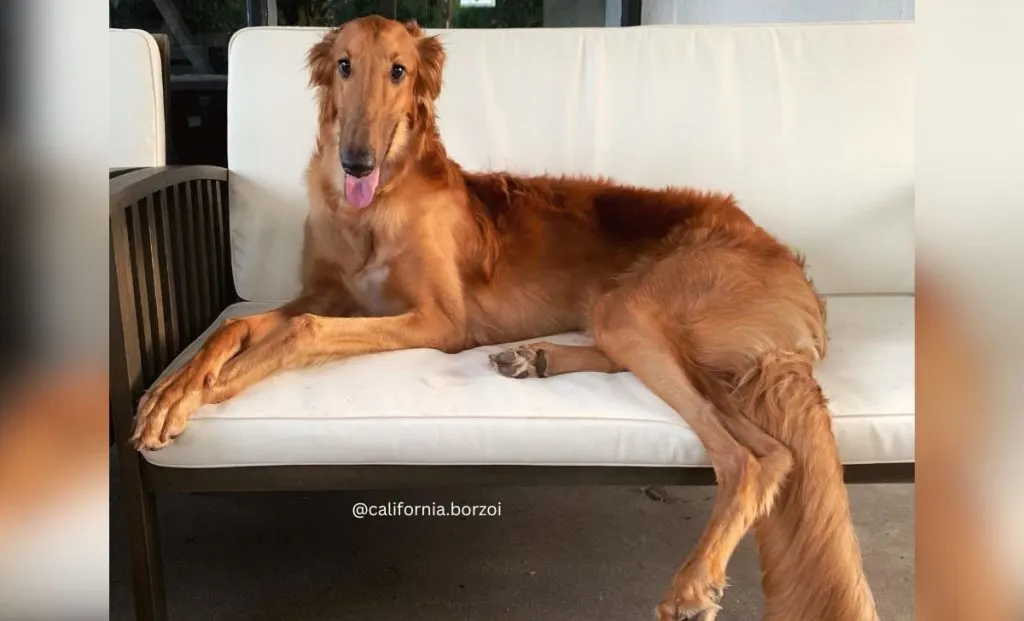
A sable dog with intense red in the areas without black hair.
31. Sabled Cream
The exact distribution of black fur as a sabled red pup but with paling of the red pigment.
32. Mahogany Red
An intensely darkened sabled red.
33. Brown
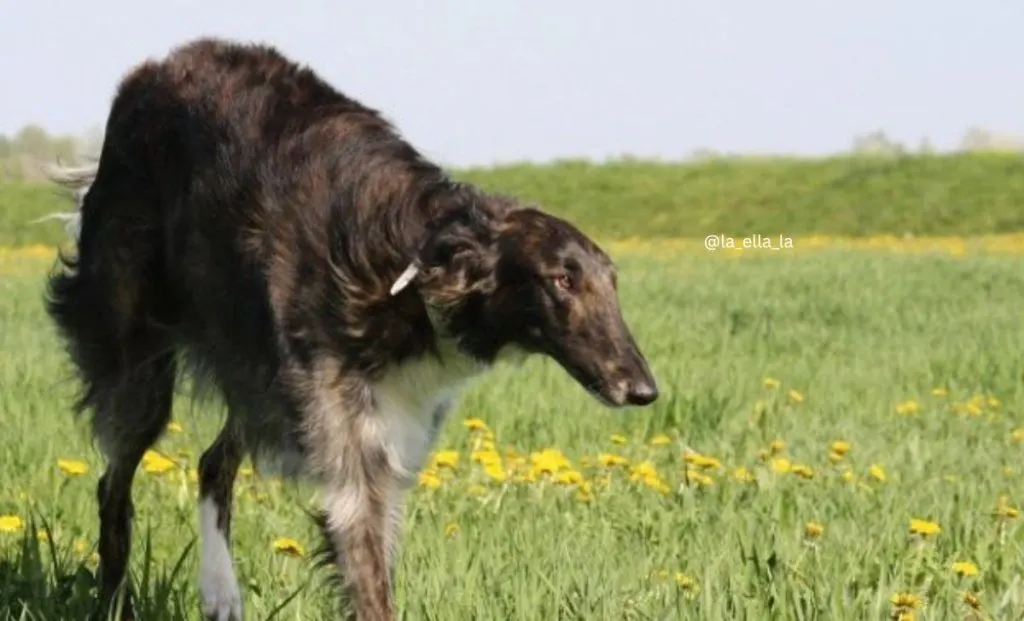
This coloring is the brown (liver) dilute.
All black pigment is transformed to liver brown. It is rare in the Borzoi breed but occurs.
Considering A Borzoi Puppy
Before committing to a Borzoi puppy, consider your lifestyle.
While they are large, they aren’t overly imposing or heavy, making them suitable for apartment living, although having a fenced-in yard for safe running is beneficial.
Despite being natural athletes bred for hunting, Borzoi is generally low-key and can stay healthy with regular long walks and occasional runs in enclosed areas.
However, their tendency to chase moving objects necessitates keeping them leashed during walks or visits to parks.
Borzoi are known for their sweet and friendly nature, getting along well with children and other dogs.
Early socialization is crucial to help them adapt to new environments. The main focus of care will revolve around grooming to maintain their silky fur free of tangles.
References
1. Bryan, Kim. Puppy Care: An Amazing Guide to Loving and Nurturing Your Pet. New York, New York, Dk Publishing, Inc, 2004.
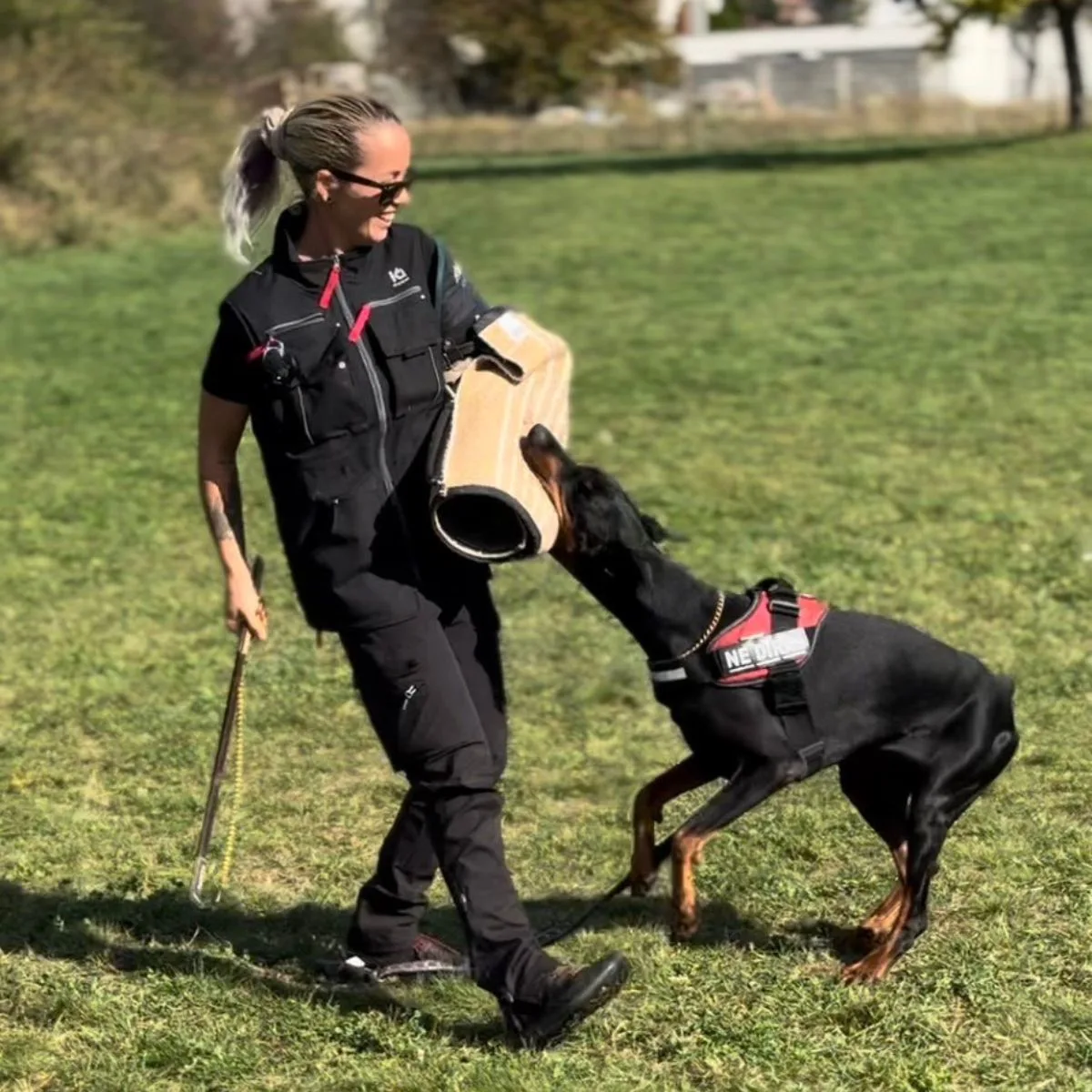
Nandina has been a lifelong dog owner and enthusiast. She shared her home with multiple breeds, including Giant Schnauzers, Cane Corsos, and Huskies. Currently, she is raising a three-year-old rescue and a working-line German Shepherd puppy.
Actively engaged in IGP dog sports for two years, Nandina is a certified instructor for basic obedience and socialization. She works as a trainer in her local dog sports club, and in her spare time, she handicrafts biothane gear for dogs.
